《MODERN LFGAL ETHICS》
| 作者 | CHARLES W.WOLFRAM 编者 |
|---|---|
| 出版 | WEST PUBLISHING CO. |
| 参考页数 | 1114 |
| 出版时间 | 1986(求助前请核对) 目录预览 |
| ISBN号 | 0314926399 — 求助条款 |
| PDF编号 | 813696738(仅供预览,未存储实际文件) |
| 求助格式 | 扫描PDF(若分多册发行,每次仅能受理1册) |
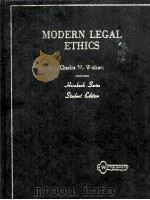
PART ONE.LAWYERS AND THE LEGAL PROFESSION1
1.The World of Lawyers1
2. Regulation of Lawyers and the Legal Profession20
3. Professional Discipline of Lawyers79
PART TWO.LAWYERS AND CLIENTS145
4.The Client-Lawyer Relationship145
5. Lawyer Competence185
6. Lawyers as Client Confidants242
7. Conflict of Interest312
8. Special Conflicts of Interest Topics410
9. Client-Lawyer Contracts495
PART THREE.THE ROLE OF LAWYERS563
10.The Adversary System563
11. Laywers as Advocates593
12. Lawyer Forensics619
13. Lawyers as Counselors687
PART FOUR.DELIVERY OF LEGAL SERVICES771
14.The Need for a Lawyer771
15. The Right to Practice Law824
16. Forms and Funding of Law Practice875
Appendix A.WESTLAW References955
TABLE OF CASES967
TABLE OF MODEL CODE OF PROFESSIONAL RESPONSIBILITY1061
TABLE OF MODEL RULES OF PROFESSIONAL CONDUCT1069
TABLE OF CANONS OF PROFESSIONAL ETHICS1077
TABLE OF ABA STANDARDS1079
TABLE OF ABA ETHICS COMMITTEE OPINIONS1081
INDEX1083
PART ONE.LAWYERS AND THE LEGAL PROFESSION1
CHAPTER ONE.THE WORLD OF LAWYERS1
1.1Lawyers1
1.2 Lawyers in Other Countries4
1.3 History of the Legal Profession7
1.4Lawyer Demography8
1.4.1 Statistical Profile of Lawyers8
1.4.2 Minorities in Law9
1.4.3 Women in Law11
1.5 Law as a Profession14
1.6 Officer of the Court17
CHAPTER TWO.REGULATION OF LAWYERS AND THE LEGAL PROFESSION20
2.1The Forms of Lawyer Regulation20
2.2 Inherent Powers of Courts to Regulate Lawyers22
2.2.1The Inherent Powers of Courts22
2.2.2 Traditional Powers of Courts24
2.2.3 Negative Inherent Powers27
2.2.4 Regulation by Trial Courts31
2.2.5 Federal Judicial and Legislative Regulation32
2.3 Bar Organizations33
2.4Bar Regulation and National Antitrust Policy38
2.4.1 Application of Federal Antitrust Laws38
2.4.2 State Action and State Autonomy42
2.5 External Review of Bar Regulation45
2.6The Lawyer Codes48
2.6.1 The Purpose and Function of Lawyer Codes48
2.6.2 The 1908 ABA Canons of Ethics53
2.6.3 1969 ABA Code of Professional Responsibility56
2.6.4 1983 ABA Model Rules of Professional Conduct60
2.6.5 California Rules of Professional Conduct64
2.6.6 Ethics Committees and Opinions65
2.7Ethics and Moral Philosophy68
2.7.1 The Place of Ethics68
2.7.2 An Outline of Theories of Ethics70
2.7.3 Morality in Social Systems: Lawyer Role Morality76
CHAPTER THREE.PROFESSIONAL DISCIPLINE OF LAWYERS79
3.1The Philosophy of Lawyer Discipline79
3.2 Disciplinary Agencies and Structure82
3.3Grounds for Discipline85
3.3.1 Standards of Discipline85
3.3.2 Lawyer Crimes90
3.3.3 Noncriminal Acts95
3.3.4 Lawyers in Nonlawyer Roles97
3.4Disciplinary Procedure99
3.4.1 The Formalization of Disciplinary Procedures99
3.4.2 Initiating Discipline100
3.4.3 Responding to Disciplinary Charges103
3.4.4 The Hearing Process106
3.4.5 Review111
3.4.6 Reciprocal Discipline115
3.5Disciplinary Sanctions117
3.5.1 The Process of Determining Sanctions117
3.5.2 Disciplinary Sanctions119
3.5.3 Reprimand126
3.5.4 Suspension or Disbarment128
3.5.5 Reinstatement132
3.5.6 Restitution135
3.5.7 Other Sanctions139
3.6Discipline in Other Forums142
3.6.1 Federal Court Discipline142
3.6.2 Discipline in Administrative Agencies143
PART TWO.LAWYERS AND CLIENTS145
CHAPTER FOUR.THE CLIENT-LAWYER RELATIONSHIP145
4.1Loyalty: Lawyers as Fiduciary Agents145
4.2 A Lawyer’s Authority148
4.3 Client-Lawyer Autonomy154
4.4 Incompetent Clients159
4.5 Communications With Clients163
4.6Settlements and Waivers of Client Rights166
4.6.1 Procedural Forfeitures166
4.6.2 Settlement Authority168
4.6.3 Waivers173
4.7 Advice of Counsel173
4.8 Client Funds and Property175
CHAPTER FIVE.LAWYER COMPETENCE185
5.1Definition and Regulation of Competence185
5.2 Legal Education193
5.3 Bar Examinations198
5.4 Postprofessional Education, Training, and Certification200
5.5 Specialization203
5.6Legal Malpractice and Other Performance-Based Liabili-ties of Lawyers206
5.6.1 The Scope of Lawyer Liability to Clients206
5.6.2 Standards of Lawyer Liability for Malpractice209
5.6.3 Proximate Causation and Damages in Legal Mal-practice218
5.6.4 Lawyer Liability to Nonclients for Negligence223
5.6.5 Intentional Wrongs of Lawyers227
5.6.6 Vicarious Liability235
5.6.7 Limiting Liability238
5.6.8 Legal Malpractice Insurance240
CHAPTER SIX.LAWYERS AS CLIENT CONFIDANTS242
6.1The Confidentiality Principle242
6.1.1 Legal and Professional Protection of Confidentiali-ty242
6.1.2 History of the Attorney-Client Privilege242
6.1.3 Policy Behind the Privilege243
6.1.4 Critiques of the Privilege243
6.2Confidentiality and the Constitution248
6.2.1 Scope of the Claims for Constitutional Protection248
6.2.2 Fourth Amendment248
6.2.3 Fifth Amendment249
6.2.4 Sixth Amendment250
6.3The Attorney-Client Privilege250
6.3.1 General250
6.3.2 Client Advice-Seeker251
6.3.3 Partisan Lawyer252
6.3.4 Invoking the Privilege253
6.3.5 Client-Communicated Information257
6.3.6 Client as the Communicative Source262
6.3.7 Confidential Setting264
6.3.8 Lawyer or Lawyer’s Agent as Recipient267
6.4Confidentiality Waivers, Exceptions, and Extensions268
6.4.1 General268
6.4.2 Client Consent268
6.4.3 Defective Assertion of the Privilege269
6.4.4 Post-Communication Disclosure to Third Persons269
6.4.5 Inadvertent Disclosure272
6.4.6 Partial Disclosure273
6.4Confidentiality Waivers, Exceptions, and Extensions— Continued273
6.4.7 Putting Legal Assistance Into Issue273
6.4.8 Coclient Rule274
6.4.9 Pooled Information276
6.4.10 The Crime-Fraud Exception279
6.5Corporate and Other Entity Clients283
6.5.1 General283
6.5.2 History of the Corporate Privilege283
6.5.3 Rationale of the Corporate Privilege283
6.5.4 Scope of the Corporate Privilege284
6.5.5 Corporate Fiduciary Exception288
6.5.6 Governmental Clients and the Privilege289
6.6Lawyer Work Product292
6.6.1 Background292
6.6.2 Scope of Work Product293
6.6.3 Work Product and the AttorneyClient Privilege295
6.7Duties of Lawyers Under the Confidentiality Principle296
6.7.1 The Confidentiality Principle296
6.7.2 The Confidentiality Principle Under the Lawyer Codes297
6.7.3 The Rationale for ?Secret” Protection299
6.7.4 Public Information as a Secret301
6.7.5 Lawyer Use or Revelation of Client Information303
6.7.6 Lawyer Self-Dealing in Client Information304
6.7.7 Authorized Use of Client Information306
6.7.8 Lawyer Self-Defense and Self-Interest307
CHAPTER SEVEN. CONFLICT OF INTEREST312
7.1Differing Interests of Lawyer and Client312
7.1.1 Conflicts of Interest in Law Practice312
7.1.2 History of Conflict of Interest Rules314
7.1.3 Conflict Principles and Competing Interests316
7.1.4 Appearances of Impropriety319
7.1.5 Standards for Conflict Identification323
7.1.6 Persons Burdened and Protected by Conflict Rules324
7.1.7 Conflict Remedies and Procedures328
7.2Client Consent to Conflicts337
7.2.1 General337
7.2.2 Consentable Conflicts: Theory and the Rules339
7.2.3 Consentable Conflicts: Reasonably Adequate Rep-resentation341
7.2.4 Informed and Voluntary Consent343
7.3Conflicts in Simultaneous Representations349
7.3.1 Principles and Professional Rules349
7.3.2 Adverse Parties in Contemporaneous Litigation350
7.3.3 Coparties in Litigation352
7.3.4 Nonlitigation Simultaneous Representation356
7.4Former-Client Conflicts of Interest358
7.4.1 General358
7.4.2 Principles and Professional Rules359
7.4.3 Differing Interests and Substantial Relationships366
7.5Conflicts of Advocate-Witnesses375
7.5.1 Difficulties of the Dual Role375
7.5.2 Developments Under the Professional Rules375
7.6Imputed Disqualification391
7.6.1 General391
7.6.2 Principles and Professional Rules391
7.6.3 Workings of Imputed Disqualification Doctrine396
7.6.4 Screening as an Alternative to Imputed Disquali-fication401
7.6.5 Government and Other Nonprofit Law Offices404
7.6.6 Spousal and Family Communities of Interest407
CHAPTER EIGHT.SPECIAL CONFLICTS OF INTEREST TOPICS410
8.1General410
8.2Conflicts of Interest in Criminal Cases410
8.2.1 The Right-to-Counsel Dimension in Criminal De- fense Conflicts410
8.2.2 Settings of Criminal Case Conflicts411
8.2.3 Constitutional Conflicts Doctrine413
8.2.4 Client Waiver or Consent416
8.2.5 Prosecutor Motions to Disqualify Defense Lawyers420
8.3Corporate and Other Entity Conflicts421
8.3.1 Cooperation and Discord in Intracorporate Rela- tions421
8.3.2 The Entity Representation Doctrine421
8.3.3 Lawyer as Director or Investor424
8.3.4 Shareholder Derivative Actions425
8.3.5 Unincorporated Associations427
8.4Indemnity Insurance Conflicts428
8.4.1 Insurance Defense Practice428
8.4.2 The Dual-Client Doctrine429
8.4.3 Special Problem Settings430
8.5 Buyer-Seller Conflicts of Interest434
8.6 Conflicts of Interest in Divorce Representation435
8.7Lawyers as Mediators438
8.7.1 Lawyers in the Mediation Process438
8.7.2 Client Consultation439
8.7.3 Workability Requirement440
8.7.4 Limitations on a Lawyer’s Role as Mediator441
8.8Conflicts Due to Third-Party Control443
8.8.1 General443
8.8.2 Third-Party Fee Payment443
8.8.3 Legal Advocacy Organizations446
8.8.4 Lawyer Control by Other Lawyers448
8.9Government Lawyers’ Conflicts of Interest448
8.9.1 General448
8.9.2 Government Lawyer Models and Roles449
8.9.3 Simultaneous Conflict Problems451
8.9.4 Former-Client Conflicts454
8.10Conflicts of Former Government Lawyers456
8.10.1 Special Dimensions of the Conflict456
8.10.2 Principles, Professional Rules, and Legislation459
8.10.3 Application of the Former-Government-Lawyer Rules467
8.11Lawyer Business Dealings With Clients479
8.11.1 The General Inadvisability of Client-Lawyer Busi- ness Deals479
8.11.2 Client-Lawyer Business Deals in the Professional Rules479
8.11.3 Strict Scrutiny Standard481
8.11.4 Disclosure and Consent in Client-Lawyer Business Dealings484
8.11.5 Remedies for Improper Business Deals485
8.12Client Gifts and Fiduciary Designations485
8.12.1 General485
8.12.2 Client Gifts to Lawyers486
8.12.3 Lawyers as Beneficiaries of Client Wills487
8.12.4 Lawyer Self-Nomination as Fiduciary488
8.13 Maintenance, Champerty, and Barratry489
8.14 Class Action Conflicts492
8.15 Settling Related Cases493
CHAPTER NINE. CLIENT-LAWYER CONTRACTS495
9.1Regulation of Client-Lawyer Contracts495
9.2Formation and Terms of Client-Lawyer Contracts501
9.2.1 Formation of Client-Lawyer Contracts501
9.2.2 Methods and Terms of Fee Payment504
9.2.3 Advancing Funds to Clients507
9.2.4 Fee Splitting509
9.3Permissible Fees513
9.3.1 Fair Fee Charges513
9.3.2 Illegal Fees522
9.3.3 Publication-Rights Contracts524
9.4Contingent Fees526
9.4.1 Contingent Fee Contracts526
9.4.2 Calculating Contingent Fees531
9.4.3 Prohibition in Criminal Cases535
9.4.4 Prohibition in Domestic Relations Cases538
9.4.5 Other Prohibited Contingent Fees541
9.5Terminating Client-Lawyer Contracts542
9.5.1 Closing Representations542
9.5.2 Client Discharge545
9.5.3 Permissive Lawyer Withdrawal548
9.5.4 Mandatory Lawyer Withdrawal551
9.6Lawyers’ Claims for Compensation553
9.6.1 Fee Disputes and Suits553
9.6.2 Fee Arbitration556
9.6.3 Attorney Liens558
PART THREE.THE ROLE OF LAWYERS563
CHAPTER TEN. THE ADVERSARY SYSTEM563
10.1Concept of the Adversary System563
10.2Principle of Professional Detachment569
10.2.1 Lawyers’ Professional Isolation From Clients569
10.2.2 Freedom of Professional Employment571
10.2.3 Unpopular Clients and Causes576
10.3Principle of Zealous Partisanship578
10.3.1 Nature of the Principle of Zeal578
10.3.2 Rationale of Zealous Partisanship581
10.4Lawyers’ Nonlegal Views582
10.4.1 Lawyers’ Values in Conflict With Clients’582
10.4.2 Lawyers and Law Reform582
10.4.3 Lawyers and Role Separation583
10.4.4 Personalities and Character of Lawyers584
10.5Justice Versus Merits; Criminal Defense585
10.5.1 Problem of Legal and Moral Entitlements585
10.5.2 Defense of the Guilty586
10.5.3 Role of Defense Counsel588
10.5.4 Plea Bargaining590
CHAPTER ELEVEN.LAWYERS AS ADVOCATES593
11.1Advocacy: An Overview593
11.2The Screening Function594
11.2.1 General594
11.2.2 Lawyers as Gatekeepers594
11.2.3 Litigational Harassment597
11.2.4 Questions of Fact598
11.2.5 Delay599
11.3Advocates and Judges600
11.3.1 The Lawyer-Judge Relationship600
11.3.2 Lawyer Criticism of Judges600
11.3.3 Professional Contact With Judges603
11.4Advocates and Jurors606
11.4.1 Jury Isolation and Secrecy606
11.4.2 Lawyer Pretrial Contract With Jurors606
11.4.3 Trial Contact607
11.4.4 Posttrial Contact608
11.5 Advocates and Adversary Lawyers609
11.6Lawyer Dealings With Nonclients610
11.6.1 General610
11.6.2 Represented Persons611
11.6.3 Contact With Unrepresented Persons616
CHAPTER TWELVE.LAWYER FORENSICS619
12.1Courtroom Forensics619
12.1.1 Nature and Control of Advocacy619
12.1.2 Prohibited Forensic Tactics622
12.1.3 Courtroom Decorum and Contemptuous Advocacy625
12.2Lawyers’ Extrajudicial Freedoms630
12.2.1 Freedoms in the Controlled Courtroom Environ- ment630
12.2.2 Extrajudicial Expressive Rights of Lawyers632
12.2.3 Other Freedom Restrictions: The Oath Cases637
12.3Advocates and Evidence638
12.3.1 Truth in the Service of Client Interests638
12.3.2 Withholding and Disclosing Evidence639
12.3.3 Falsifying Facts641
12.3.4 Distorting Facts642
12.3.5 Document Destruction and Other Suppression of Evidence643
12.4Advocates and Witnesses646
12.4.1 Dealing With Witnesses646
12.4.2 Discouraging or Suppressing Testimony646
12.4.3 Coaching and Falsifying Testimony647
12.4.4 Harassing Witnesses649
12.4.5 Cross-Examination650
12.4.6 Compensating Witnesses651
12.5Advocates and Perjury653
12.5.1 The Problem of Perjury653
12.5.2 What Lawyers Know655
12.5.3 Dealing With False Testimony656
12.5.4 Perjury by Persons Accused of Crime660
12.6Disclosing Client Wrongdoing663
12.6.1 Lawyer Disclosure Adverse to a Client663
12.6.2 Active Involvement versus Passive Knowledge666
12.6.3 Whistle-Blowing666
12.6.4 Disclosure Under the Lawyer Codes668
12.6.5 Judicial Doctrines on Disclosure672
12.6.6 Disclosure in Securities and Corporate Practice675
12.7 Disclosure in Ex Parte and Similar Proceedings678
12.8 Disclosing Adverse Legal Authority681
12.9 Disclosing Jury Tampering682
12.10Disclosing Lawyers’ Misconduct683
12.10.1 Reporting Lawyer Wrongdoing683
12.10.2 Cooperating With Disciplinary Agencies686
CHAPTER THIRTEEN. LAWYERS AS COUNSELORS687
13.1Overview of a Lawyer’s Work687
13.2Office Counseling688
13.2.1 Counseling Function688
13.2.2 Stages of Counseling690
13.2.3 Counseling Techniques690
13.2.4 Objectives of Counseling691
13.3Advising Clients692
13.3.1 Client Objectives and Legal Uncertainty692
13.3.2 Advising on the Limits of the Law: Client Crimes692
13.3.3 Knowledge Issues695
13.3.4 White-Collar Crime697
13.3.5 Ongoing Illegal Enterprises697
13.3.6 Fraudulent and Sham Transactions698
13.3.7 Defying Court Orders701
13.3.8 Test Cases, Desuetude, and Civil Disobedience702
13.3.9 Unconscionable, Tortious, and Other Unlawful Acts703
13.3.10 Repugnant or Imprudent Client Projects705
13.4Evaluation706
13.4.1 A Lawyer’s Role as Evaluator706
13.4.2 Eligible Evaluators707
13.4.3 Confidentiality in Evaluation708
13.4.4 Duties to Third Parties709
13.5Negotiation710
13.5.1 Nature of the Negotiation Function710
13.5.2 Negotiation Settings710
13.5.3 Negotiation Tactics in General713
13.5.4 Force—Lawyer Extortion714
13.5.5 Threat of Criminal Prosecution716
13.5.6 Threat of Noncriminal Proceedings718
13.5.7 Deception in Tort and Contract Law719
13.5.8 Deception Under the Professional Regulations722
13.6 Mediation727
13.7Corporate Practice731
13.7.1 Lawyers and Corporations731
13.7.2 Corporate Client-Lawyer Relationship732
13.7.3 House Counsel736
13.7.4 Outside Counsel738
13.7.5 Corporate Advising740
13.8Lawyers and the Political Process746
13.8.1 Lawyers in American Politics746
13.8.2 Lawyer-Lobbyists747
13.8.3 Lawyer-Legislators751
13.9Government Lawyers753
13.9.1 Legal Advisers and Policy Makers753
13.9.2 Discretion of Government Lawyers756
13.10Prosecutors759
13.10.1 Constituencies of Prosecutors759
13.10.2 Responsibilities of Prosecutors760
13.10.3 Prosecutorial Discretion762
13.10.4 Prosecutors and Advocacy765
13.10.5 Mandatory Disclosure to the Accused767
13.10.6 Plea Bargaining769
PART FOUR.DELIVERY OF LEGAL SERVICES771
CHAPTER FOURTEEN.THE NEED FOR A LAWYER771
14.1Client Needs for Legal Services771
14.2Information About Legal Services774
14.2.1 Lawyer Referral and Law Lists774
14.2.2 The Economics and History of Lawyer Advertising775
14.2.3 Lawyer Advertising and the Constitution778
14.2.4 Scope of Regulatory Power780
14.2.5 Solicitation785
14.3Right to Counsel in Criminal Cases791
14.3.1 Constitutional Bases791
14.3.2 Critical Stages in Criminal Proceedings795
14.3.3 Implementing the Right to Counsel—Indigence796
14.3.4 Staffing the Right to Counsel797
14.3.5 Appointment Systems798
14.3.6 Public Defender Systems800
14.3.7 Right to Retained Counsel802
14.4Right to Self-Representation803
14.4.1 Pro Se Litigation803
14.4.2 The Pro Se Right in Criminal Cases805
14.5 Right to Counsel in Civil Cases807
14.6Effective Assistance of Counsel810
14.6.1 The Right to Effective Assistance810
14.6.2 Standards of Effective Assistance812
14.6.3 Application of the Effectiveness Standard815
14.6.4 State Interference With the Right to Counsel819
CHAPTER FIFTEEN.THE RIGHT TO PRACTICE LAW824
15.1Authorized and Unauthorized Practice824
15.1.1 Nature and Background of Unauthorized Practice Regulation824
15.1.2 Rationale of Unauthorized Practice Law828
15.1.3 Workings of Unauthorized Practice Doctrine834
15.1.4 Lawyers and Unauthorized Practice846
15.2Bar Admission Requirements849
15.2.1 Bar Admission: General849
15.2.2 Educational Requirements851
15.2.3 Residence Requirements852
15.2.4 Admission in Federal Courts853
15.2.5 Practice Before Administrative Agencies854
15.3Competence and Character856
15.3.1 Choosing Suitable Practitioners856
15.3.2 Assessing Character858
15.4Multijurisdictional Practice865
15.4.1 Practicing Law in a Federal Nation865
15.4.2 Admission on Motion869
15.4.3 Appearance Pro Hac Vice871
CHAPTER SIXTEEN. FORMS AND FUNDING OF LAW PRACTICE875
16.1Theories About Paying for Legal Services875
16.2Law Firms877
16.2.1 Nature of Law Firms and Firm Practice877
16.2.2 Subordinate and Supervising Lawyers880
16.2.3 Lawyer Partnerships883
16.2.4 Lawyer Professional Corporations889
16.2.5 Associated Lawyers891
16.3Nonlawyer Employees of Lawyers892
16.3.1 Scope of Lawyer Responsibility892
16.3.2 Paralegals896
16.4 Dual Practice897
16.5Group Legal Services898
16.5.1 Meeting the Legal Service Needs of the Middle Class898
16.5.2 Constitutional Freedom to Deal With Legal Needs899
16.5.3 Types of Group Legal Service Plans901
16.5.4 Strengths and Weaknesses of Group Legal Service Plans904
16.5.5 Regulation of Legal Service Plans910
16.6Fee Shifting918
16.6.1 American Rule918
16.6.2 Common-Law Exceptions922
16.6.3 Legislative Exceptions929
16.6.4 Ethical Issues in Fee Shifting931
16.7Legal Services for the Poor932
16.7.1 Legal Needs of the Poor932
16.7.2 Legal Aid933
16.7.3 Government-Funded Legal Services for the Poor936
16.7.4 Legal Services Lawyering and Client-Lawyer Re- lationships939
16.8 Public Interest Practice946
16.9 Pro Bono Legal Services949
Appendix A. WESTLAW References955
TABLE OF CASES967
TABLE OF MODEL CODE OF PROFESSIONAL RESPONSIBILITY1061
TABLE OF MODEL RULES OF PROFESSIONAL CONDUCT1069
TABLE OF CANONS OF PROFESSIONAL ETHICS1077
TABLE OF ABA STANDARDS1079
TABLE OF ABA ETHICS COMMITTEE OPINIONS1081
INDEX1083
1986《MODERN LFGAL ETHICS》由于是年代较久的资料都绝版了,几乎不可能购买到实物。如果大家为了学习确实需要,可向博主求助其电子版PDF文件(由CHARLES W.WOLFRAM 1986 WEST PUBLISHING CO. 出版的版本) 。对合法合规的求助,我会当即受理并将下载地址发送给你。
高度相关资料
-

- FEMINIST ETHICS
- 1991 UNIVERSITY PRESS OF KANSAS
-

- EVERYDAY ETHICS
- 1993
-
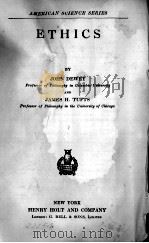
- ETHICS
- 1924 HENRY HOLT AND COMPANY
-

- Museum Ethics
- 1997 Taylor & Francis
-

- Museum ethics
- 1997 Routledge
-

- FINANCIAL ETHICS
- 1999 KLUWER ACADEMIC PUBLICHERS
-

- LEGAL ETHICS
- 1983 U.P.LAW CENTER
-

- MEDIA ETHICS
- 1997 MC GRAW HILL
-
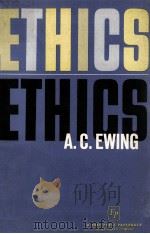
- Ethics
- 1965 The Free Press
-

- ETHICS
- 1977 PENGUIN BOOKS
-
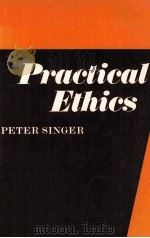
- PRACTICAL ETHICS
- 1979 CAMBRIDGE UNIVERSITY PRESS
-
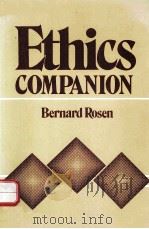
- ETHICS COMPANION
- 1990 PRENTICE HALL
-

- CHRISTIAN ETHICS
- 1908 NEW YORK CHARLES SCRIBNER'S SONS
-

- ETHICS
- 1933 HARPER & BROTHERS PUBLISHERS
提示:百度云已更名为百度网盘(百度盘),天翼云盘、微盘下载地址……暂未提供。➥ PDF文字可复制化或转WORD
